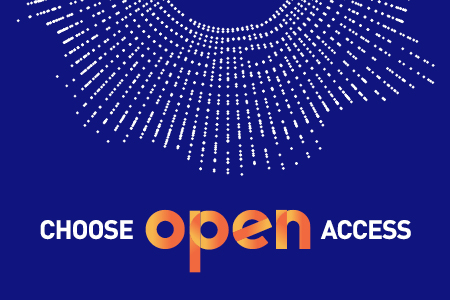Summary
Taylor & Francis is committed to enabling sustainable open research initiatives that lead to more open scholarly communications. We will find an appropriate open home for any research based on sound science that is submitted to us.
We will focus on routes to open access that recognise the value that publishers add to the research communication ecosystem. As with any commercial undertaking or enterprise, publishers need to be compensated for the services we provide.
A successful open research ecosystem requires a variety of approaches and the acceptance that not all disciplines will move towards this goal at the same speed.
We commit to working collaboratively and creatively with funders, institutions, researchers and policymakers to drive a sustainable shift towards open research.
Our contributions so far
- A range of Open Access (OA) publishing options for over 95% of our journals, over 330 fully OA journals and our ongoing conversion commitment. This has led to 122 journals being converted from subscription to OA since 2012.
- We also currently have 29 Diamond titles, which are free to read and free to publish in. To improve the diversity of options available for under-funded HSS disciplines, we launched two successful collective-funding pilots in 2025: Subscribe to Open and a Collective Pathway to Open Publishing which aim to make an additional five hybrid journals free to read and free to publish in 2025 and onwards, provided that annual thresholds are met.
- More than 60 transformative agreements serving over 1000 institutions, showing a particularly strong trend in making OA and its impacts accessible to Social Science & Humanities researchers. Additionally, our OA policy enables authors to share an earlier version of their article in their repository, depending on a range of factors.
- Open research platforms and gateways from F1000 for major research funders and organisations worldwide including the European Commission, the Gates Foundation, Wellcome and others, providing a route to support their researchers in adhering to open research principles and making the full breadth of their research outcomes available sooner to a global audience.
- Driving innovation in the rapid dissemination of findings while upholding research integrity through the first-of-its kind Verified Preprint Server, VeriXiv.
- Supporting good open research practice, as evidenced through clear and progressive data sharing policies, training and support for researchers, and membership in industry groups such as the Open Access Scholarly Publishers Association (OASPA), as well as participation in the S2O Community of Practice and groups like the Research Data Alliance (RDA).
- Leading the way in open research for humanities by encouraging data sharing for HSS and expanding HSS output types. Our publishing platform, Routledge Open Research offers authors across the Arts, Humanities, Behavioral and Social Sciences a dedicated, interdisciplinary venue to disseminate a wide range of outputs fully OA.
- Providing flexible options for OA books, such as our Open Books Archive and our archiving policy. We have published over 2,000 books OA, as well as thousands of individual chapters. In 2023, we launched our collective-funding non-BPC based model, Pledge to Open (P2O) in consultation with our library partners. In 2024, through the first pilot year, we were able to open 26 books through the support of libraries globally.
Progression towards Open Access
Progress towards OA in scholarly communications is happening at different speeds, and varies across geographies and disciplines, but we will move ambitiously and with a diversity of pathways to support as many researchers to share their work openly as possible. Our goal is to achieve what authors need and what funders require, even if it is not always possible to have the same speed and rate of OA take-up across all disciplines.
We continue to evolve a growing range of cost-effective open choices for the research community on how content is accessed, shared and discovered. These include F1000’s publishing gateways and platforms, an extensive range of hybrid and full OA journals, and OA books. Our approach to OA is underpinned by our ongoing commitment to libraries, consortia, scholarly societies and funders to develop innovative options to address their needs, alongside a commitment to be proactive advocates of an open future.
Our positions on Open issues
Gold Open Access
The road to Open allows us to focus on Gold OA to the version of record. This is a sustainable solution where users can be confident that the final published article that we have helped to produce will exist in perpetuity.
- We will focus on the definitive version of record and devise solutions to make access open to this version which we have helped create, validate, enrich and curate. This might be via Gold OA, through read and publish deals, innovative platforms and gateways, or something else: we are constantly and actively exploring new options.
- We publish all Gold OA book content immediately, without embargo.
- We permit posting of Accepted Manuscripts (AM) under embargo periods of 12 months for STM journals and 18 months for HSS journals to support preservation and institutional repositories. Green Open Access is not sustainable and relies on a healthy, functioning subscription model.
Hybrid journals
Progress towards Open happens at different speeds, using different approaches. We will continue to operate in a mixed model environment for some time, especially in HSS. We encourage authors to take an Open route to publication and offer them the support to do so.
- We advocate OA vocally and ambitiously. In some circumstances and for some disciplines, mixed funding models will remain. In HSS, the challenges around establishing full OA venues are considerable. This is due to the nature, size, and selectivity of typical HSS journals and compounded by the funding methods available for these disciplines.
- OA content on our platform has greater impact than content behind a paywall – this also applies to open access articles in hybrid journals¹. Where full OA is not currently viable, hybrid OA is an important option to offer to sustain research quality, especially in HSS disciplines.
Rights and licensing
We wholeheartedly support the aims of funders and policymakers to deliver immediate open access.
- We believe the definitive version of record, which publishers have helped to create, validate, enrich and curate, is the best way forward to ensure the accuracy and longevity of the scholarly record. We will continue to develop routes to open access for this version in partnership with all stakeholders.
- Policies that do not provide funded, sustainable routes to open access will not work. We will retain embargoes on Accepted Manuscript posting where we have them.
Open Research
OA is a key aspect of open research which we value as part of a broader open research agenda. We have established three open research indicators against which we have set targets and will monitor progress over the next five years through to 2025:
- Establishing funder-compliant Open publication pathways to meet the needs of all HSS authors through pilots, partnerships, and F1000.
- Proactively using transformative agreements for consortia globally, paving the way to move to full OA.
- Implementing and monitoring progress of key Open Science activities across our journal portfolio by supporting more journals to adopt open data policies, new article types and pre-print server integrations while acknowledging and rewarding authors’ contributions through Open Science badges and the implementation of the CRediT taxonomy.
Call to action
Taylor & Francis believes that Open Research is the best way to amplify and communicate research in order to deliver real world impact.
To achieve an Open future, we will continue to work closely and collaboratively with research institutions, scholarly societies, funders and policymakers. In addition to adequate funding, we must allow for innovative models and must accommodate both fast-moving disciplines and those that are not.
We will commit to ensuring that every researcher has relevant and realistic options available to them to publish their work, so that no researcher is left without a voice, regardless of funding source.
Our position on open access pricing
We are transparent in our approach to setting open access article and book publishing charges and the sales deals we make with organizations that include open access elements.
 Africa
Africa  China
China  Japan
Japan 


